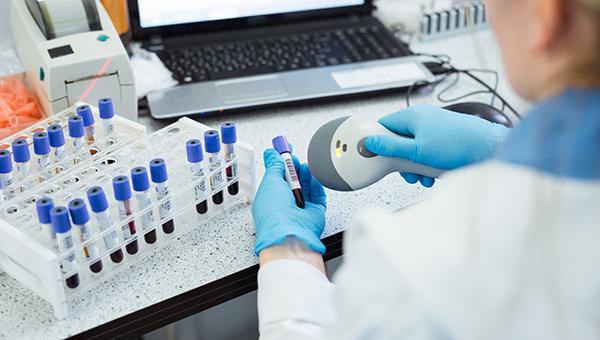Even as COVID-19 Care Improved in NYC, Troponin Still Signaled Higher Mortality
Hospitalized patients “should be monitored more closely and maybe get more-aggressive therapy,” the senior author says.

Myocardial injury in COVID-19, as denoted by high cardiac troponin, is known to independently predict increased death risk, particularly when the biomarker elevation is accompanied by echocardiographic abnormalities.
The question was whether, amid the evolution of the pandemic, cardiac troponin’s relevance waned.
“We here in New York City had been the epicenter, and what we had noticed is that [the disease’s impact] appeared to be milder the second time around,” Martin E. Goldman, MD (Icahn School of Medicine at Mount Sinai, New York, NY), the study’s senior author, told TCTMD.
The takeaway of this study, stressed Goldman, is that biomarker levels continued to matter. Patients with elevated troponin “should be monitored more closely and maybe get more-aggressive therapy, because . . . once the heart injury is manifested by troponin elevation, your mortality is going to be greater,” he advised.
The results were published in the October 5, 2021, issue of the Journal of the American College of Cardiology.
Two Eras
For the study, Goldman, along with lead author Solomon W. Bienstock, MD (Icahn School of Medicine at Mount Sinai), and colleagues, looked at adults hospitalized in their healthcare system who had lab-confirmed SARS-CoV-2 infection and troponin values measured within 24 hours of admission. The investigators considered two time periods: March-June 2020 (n = 5,698) and October-December 2020 (n = 1,540).
Patients seen in the first time frame had significantly higher rates of hypertension (35% vs 31%), diabetes (24% vs 20%), and chronic kidney disease (CKD; 12% vs 9.4%) than did those admitted later in the pandemic. At admission, their Sequential Organ Failure Assessment scores also tended to be higher (1.99 vs 1.51). Nearly half of those treated in the later period were white, as opposed to only 29% in the earlier period.
In-hospital mortality was higher in the earlier versus later era (23% vs 13%), as was the intubation rate (12% vs 7.6%; P < 0.001 for both). Despite these differences, the rate of ICU admission and median length of hospital stay each held steady.
Median peak troponin elevation also was higher in period 1 than in period 2 (0.03 vs 0.02 ng/mL). Adjusted for age, race, sex, body mass index, smoking status, and history of CAD, congestive heart failure, hypertension, CKD, and atrial fibrillation, positive troponin on admission was linked to increased 30-day mortality in period 1 (HR 1.53; 95% CI 1.19-1.96) and period 2 (HR 1.80; 95% CI 1.03-3.24). Modeled as a continuous variable, each 1-ng/mL increase in peak troponin elevation was tied to significantly higher in-hospital mortality in period 1, and this association only grew stronger in period 2.
Bienstock et al say the overall decrease in mortality between the two eras could be due to many factors: “earlier infection detection, increased testing, novel treatments, virus variants, increased preparedness, and/or lower patient volumes.” Yet the link between death risk and peak troponin grew “more robust,” they stress. “Possibly, cardiac injury of any degree plays an important role in mortality even in less severe ‘waves’ of this illness.”
Goldman explained that there are a variety of reasons why mortality decreased.
In general, the patients arriving at the hospital during the second wave were less ill, he noted. “But why was that? It may well have been that people were better educated [to get to] the hospital earlier. In the first wave, people were told to stay home.”
Also instrumental, he suggested, was the growing array of treatment options that came with experience: monoclonal antibodies, steroids, and anticoagulation, among other therapies. ”So the overall mortality was mitigated by our sophistication in appreciating therapies that work,” said Goldman.
As of now, it’s not clear how myocardial injury might be prevented among COVID-19 patients before it occurs, Goldman said. And “once this disease starts spinning out of control and you get the inflammation and all the collateral damage, there may not be any way of stopping it.” But because the damage appears to be “due to the inflammatory process rather than direct invasion of the heart by virus,” targeting inflammation might prove helpful, he added.
Caitlin E. Cox is News Editor of TCTMD and Associate Director, Editorial Content at the Cardiovascular Research Foundation. She produces the…
Read Full BioSources
Bienstock SW, Tandon P, Govindarajulu U, et al. Impact of myocardial Injury in hospitalized patients with COVID-19 in 2 peak time periods. J Am Coll Cardiol. 2021;78:1482-1483.
Disclosures
- Bienstock and Goldman report no relevant conflicts of interest.





Comments